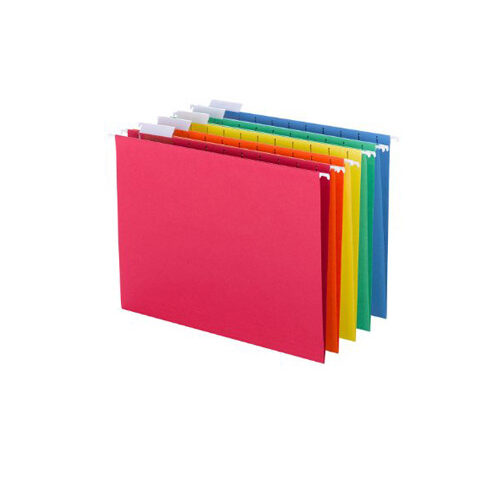
What Is a TMP File? A Comprehensive Guide to Temporary Files
September 18, 2025
What Is Chris Rock’s Net Worth in 2025?
November 3, 2025In today’s fast-paced world, staying organized is more than just a preference—it’s a necessity. Whether you’re managing a home office, a bustling corporate workspace, or even a classroom setup, file hanging folders are an indispensable tool for keeping documents in order. These versatile storage solutions, also known as hanging file folders, allow you to suspend files within drawers or cabinets, making retrieval quick and effortless. If you’re tired of rummaging through piles of paper or dealing with cluttered desks, investing in quality file hanging folders could transform your organizational game.
This comprehensive guide dives deep into everything you need to know about file hanging folders. From their benefits and types to tips on selection and maintenance, we’ll cover it all. By the end, you’ll be equipped to choose the best hanging folders for your needs, ensuring a tidy and productive environment. Let’s explore how these simple yet effective items can streamline your life.
What Are File Hanging Folders and Why Do You Need Them?
File hanging folders are specially designed folders with built-in hooks or tabs that allow them to hang from rails in filing cabinets, drawers, or portable file boxes. Typically made from sturdy materials like reinforced paper, plastic, or even recycled content, they come in standard sizes such as letter (8.5 x 11 inches) and legal (8.5 x 14 inches). The primary purpose is to hold individual file folders or loose documents, preventing them from slumping or getting lost at the bottom of a drawer.
Why are they essential? In a digital age, physical documents still play a crucial role in many sectors. Think tax records, medical files, client contracts, or student assignments—these need secure, accessible storage. According to office productivity studies, disorganized workspaces can waste up to 4 hours per week searching for misplaced items. File hanging folders eliminate this hassle by providing a structured system where files are suspended and labeled for easy visibility.
Moreover, they promote eco-friendliness when made from recycled materials, reducing your carbon footprint. For businesses, they ensure compliance with data organization standards, while for home users, they simplify bill tracking or recipe collections. If you’re transitioning to a paperless office but still handle hybrids, hanging folders bridge the gap seamlessly.
Types of File Hanging Folders: Finding the Right Fit
Not all file hanging folders are created equal. Understanding the varieties available can help you select ones that match your specific requirements. Here’s a breakdown of the most common types:
Standard Paper Hanging Folders
These are the classic choice, often made from manila or colored cardstock with metal hooks. They’re affordable, lightweight, and ideal for everyday use in low-volume settings like home offices. Available in packs of 25 or more, they feature adjustable tabs for labeling, making categorization a breeze. However, they may wear out faster in high-traffic environments.
Reinforced Hanging Folders
For durability, reinforced options are a step up. They include plastic edges or full-bottom reinforcements to prevent tearing and sagging under heavy loads. Brands like Pendaflex and Smead offer these with extra-thick stock, perfect for legal firms or archives where files are frequently accessed. Some even come with expandable bottoms to hold bulkier contents.
Plastic and Poly Hanging Folders
If moisture or frequent handling is a concern, plastic hanging folders shine. Made from polypropylene or vinyl, they’re water-resistant and tear-proof, ideal for kitchens, workshops, or outdoor job sites. They often feature clear tabs for easy reading and come in vibrant colors for color-coding systems. While pricier, their longevity makes them a worthwhile investment.
Eco-Friendly and Recycled Options
Sustainability-conscious users will appreciate recycled hanging folders. These are crafted from post-consumer waste, maintaining strength while being kinder to the planet. Companies like Earthwise produce them without compromising on features like built-in tabs or expansion capabilities. They’re great for green offices aiming for LEED certification.
Specialty Hanging Folders
For niche needs, there are folders with built-in pockets, dividers, or even antimicrobial coatings to reduce germ spread in shared spaces. Legal-sized versions cater to professionals, while mini or desktop varieties fit portable file totes for on-the-go organization.
Choosing the right type depends on your usage—assess volume, environment, and budget to make an informed decision.
Benefits of Using File Hanging Folders in Your Daily Routine
Incorporating file hanging folders into your setup offers numerous advantages that go beyond mere storage. Let’s delve into why they’re a smart choice.
First, they maximize space efficiency. By hanging vertically, they utilize drawer height fully, allowing you to store more without expanding your footprint. This is especially useful in compact apartments or crowded cubicles.
Second, enhanced accessibility reduces frustration. With tabs protruding above the files, you can scan labels at a glance—no more digging through stacks. This speeds up workflows, whether you’re a teacher grading papers or an accountant filing receipts.
Third, they support customization. Color-coding (e.g., red for urgent, green for completed) or alphabetical/numerical labeling creates intuitive systems. Add index tabs or printed labels for even better organization.
From a health perspective, a clutter-free desk promotes mental clarity and reduces stress. Studies from the Princeton Neuroscience Institute show that visual clutter competes for attention, lowering productivity. Hanging folders keep things neat, fostering focus.
Finally, they’re cost-effective. A basic pack costs under $20, yet they last years with proper care, saving money on replacements or lost documents.
How to Choose the Best File Hanging Folders for Your Needs
Selecting the perfect file hanging folders involves considering several factors to ensure they meet your demands. Start with size: Measure your cabinet or drawer rails to confirm compatibility—most standard folders fit 15- to 18-inch depths.
Material matters too. For heavy-duty use, opt for reinforced or plastic; for light tasks, paper suffices. Check weight capacity if storing thick files.
Tab style is key—straight-cut for broad labels or angled for staggered visibility in drawers. Expansion features, like accordion bottoms, accommodate growing files.
Brand reputation: Trusted names like Avery, Office Depot, or Amazon Basics offer warranties and consistent quality. Read reviews for real-user insights on durability.
Budget: Entry-level options start at $0.50 per folder, while premium ones reach $2 each. Bulk buying often yields discounts.
Eco-impact: If sustainability is a priority, look for FSC-certified or 100% recycled products.
Lastly, test compatibility with your existing setup. Some folders require specific rail systems, so verify before purchasing.
Tips for Organizing with File Hanging Folders Effectively
To get the most out of your file hanging folders, follow these practical tips:
- Categorize Logically: Group files by theme—e.g., “Finances,” “Projects,” “Personal.” Use subfolders within hangers for finer division.
- Label Clearly: Invest in a label maker or use bold markers. Include dates or codes for quick reference.
- Color-Code for Speed: Assign colors to categories (blue for bills, yellow for ideas) to visually navigate.
- Purge Regularly: Review contents quarterly to discard outdated documents, preventing overflow.
- Combine with Accessories: Use file frames for non-cabinet drawers or portable boxes for mobility.
- Digital Integration: Scan important docs and note file locations in apps like Evernote for hybrid systems.
Implementing these strategies can turn chaos into order overnight.
Maintenance and Longevity: Keeping Your Hanging Folders in Top Shape
Proper care extends the life of your file hanging folders, saving time and money. Avoid overstuffing—limit to 1-2 inches thick per folder to prevent bending hooks.
Store in dry, cool places to ward off mold or warping. For plastic types, wipe with mild soap; paper ones benefit from dust covers.
Inspect hooks periodically for rust or damage, replacing as needed. In humid areas, silica packets can absorb moisture.
Recycle responsibly when retiring folders—many are curbside recyclable.
With minimal effort, your system remains reliable for years.
Common Mistakes to Avoid When Using File Hanging Folders
Even seasoned organizers slip up. Don’t mix sizes in one drawer, as it causes misalignment. Avoid vague labels like “Stuff”—be specific.
Overlooking expansion needs leads to crammed folders; plan for growth. Ignoring ergonomics? Position drawers at waist height to prevent strain.
Finally, skipping backups for critical files is risky—always have digital copies.
Where to Buy Quality File Hanging Folders
Shopping options abound. Office supply stores like Staples or OfficeMax offer in-person selection. Online, Amazon provides vast variety with fast shipping. Walmart and Target stock budget-friendly packs.
For bulk or custom, check manufacturers’ sites like Smead.com. Compare prices and read verified reviews to ensure value.
Conclusion: Elevate Your Organization with File Hanging Folders
File hanging folders are more than storage—they’re a pathway to efficiency and peace of mind. By understanding types, benefits, and best practices, you can create a system tailored to your lifestyle. Whether revamping your home office or optimizing a corporate archive, these folders deliver reliability and simplicity.
Ready to get organized? Start small: Pick a drawer, sort your papers, and invest in a set today. Your future self will thank you for the time saved and stress reduced. For more tips on office essentials, explore related guides on desk organizers or digital filing apps.




